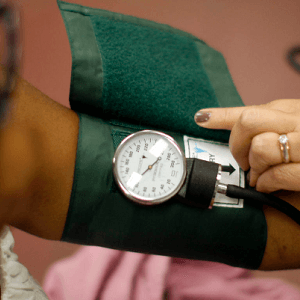A recent study by the Polis Center at IU Indianapolis reveals stark health disparities across Indianapolis neighborhoods, highlighting the critical role of location in determining health outcomes. The research, presented at Central Library, demonstrates how social and economic factors significantly impact residents’ well-being, particularly in minority communities.
The study found that Black residents, comprising only 15% of Central Indiana’s population, live in over half of the areas at risk for worse health outcomes. These disparities are most prominent in neighborhoods on Indianapolis’ east, west, and south sides, where residents face higher risks of cancer, heart disease, and poor mental health.
Ally Scott, a data analyst at the Polis Center, emphasized that factors such as education, job opportunities, housing, food access, and medical care account for 80 to 90% of health outcomes. This statistic underscores the complex interplay between social determinants and health disparities.
The impact of these disparities is starkly illustrated in areas like the near north side, where life expectancy is two decades lower than in other parts of the city. Danita Hoskin, president of the Crown Hill Neighborhood Association, noted the long-term effects of racism and housing discrimination on community health.
While initiatives like the Indy Health District’s $500 million investment in Crown Hill and four other neighborhoods offer hope, community leaders stress the need for continued research and data collection to address these disparities effectively.
The study serves as a call to action for policymakers and healthcare providers to implement targeted interventions that address the root causes of health inequities in Indianapolis. By focusing on neighborhood-level factors, the city can work towards creating more equitable health outcomes for all residents, regardless of where they live.
See: “Why your health in Indy depends on your neighborhood” (March 11, 2025)



